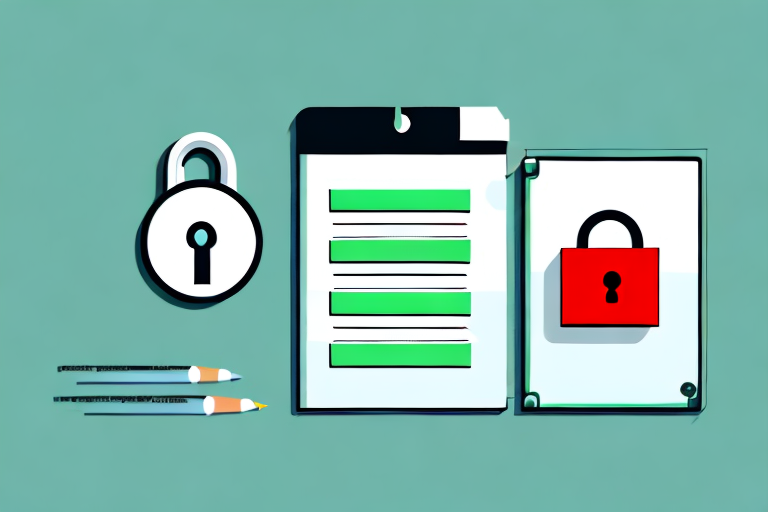Effective communication is a crucial aspect of Anti-Money Laundering (AML) compliance. To ensure that organizations maintain a strong AML compliance program, it is essential to have a comprehensive communication strategy in place. This article will guide you through the key elements of an AML compliance communication checklist, strategies for developing a comprehensive communication strategy, and best practices for internal and external communication channels. We will also explore the challenges that organizations may face in AML compliance communication and provide case studies of successful communication strategies. Additionally, we will discuss future trends in AML compliance communication and provide tips for improving communication in a remote work environment. Lastly, we will examine the role of leadership in driving effective AML compliance communication and address cultural and language barriers in global AML communications.
Understanding AML Compliance Communication
Before delving into the checklist, let’s first understand the importance of AML compliance communication. AML regulations are designed to prevent money laundering and the financing of illegal activities. Effective communication plays a crucial role in ensuring that employees at all levels of an organization understand their obligations and responsibilities in combating money laundering.
AML compliance communication involves conveying information, policies, and procedures related to AML regulations to employees, clients, partners, and regulatory authorities. This communication is vital to maintain a strong culture of compliance and mitigate the risk of financial crimes.
Effective AML compliance communication involves various channels and methods to ensure that the message is effectively delivered and understood by the intended recipients. This can include training sessions, workshops, and seminars to educate employees on AML regulations and best practices. Regular updates and reminders through emails, newsletters, and intranet portals can also help reinforce the importance of compliance.
Furthermore, open lines of communication should be established within the organization, allowing employees to ask questions, seek clarification, and report any suspicious activities or concerns. This promotes a culture of transparency and encourages employees to actively participate in the fight against money laundering.
External communication is equally important in AML compliance. Financial institutions and businesses must effectively communicate their AML policies and procedures to clients, partners, and regulatory authorities. This ensures that all stakeholders are aware of their roles and responsibilities in preventing money laundering and complying with AML regulations.
The Importance of Effective AML Compliance Communication
Effective AML compliance communication is essential for several reasons. Firstly, it ensures that employees are aware of their responsibilities and the potential risks associated with money laundering. By providing clear and concise communication, organizations can empower employees to identify and report suspicious activities promptly.
Secondly, effective AML compliance communication helps build trust and credibility with clients and partners. When organizations demonstrate a commitment to AML compliance and effectively communicate their policies and procedures, they instill confidence in their stakeholders and strengthen relationships.
Thirdly, regulatory authorities expect organizations to have robust AML compliance communication strategies in place. Regular reporting and communication with regulatory authorities demonstrate an active and vigilant approach to combating money laundering, which can help in maintaining a positive regulatory relationship.
Furthermore, effective AML compliance communication contributes to an organization’s overall risk management framework. By promoting a culture of compliance, organizations can minimize the risk of financial and reputational damage resulting from money laundering activities.
Moreover, effective AML compliance communication plays a crucial role in educating employees about the latest trends and techniques used by money launderers. By staying informed and updated, employees can better understand the evolving nature of money laundering and adapt their compliance efforts accordingly.
Key Elements of an AML Compliance Communication Checklist
An AML compliance communication checklist should encompass key elements that facilitate effective communication throughout an organization. Here are some essential components to include in your checklist:
1. Clear and concise communication: Ensure that all AML-related information, policies, and procedures are communicated in a clear and concise manner. Avoid jargon and technical language that may impede understanding.
2. Comprehensive training and education: Provide adequate training and education to employees at all levels. This should include an understanding of AML regulations, the organization’s specific policies and procedures, and how to identify and report suspicious activities.
3. Internal communication channels: Establish effective internal communication channels to disseminate AML-related information regularly. This can include email updates, intranet portals, newsletters, and team meetings.
4. External communication strategies: Develop strategies for communicating AML-related information to clients, partners, and other external stakeholders. This can include regularly updating client-facing materials, hosting informational webinars, and providing direct communication channels for queries or concerns.
5. Technology implementation: Leverage technology solutions to enhance the efficiency and effectiveness of AML compliance communication. This may include automated reporting tools, secure messaging platforms, and data analytics to identify potential risks.
6. Consistency across platforms: Ensure that AML messaging remains consistent across all communication platforms, including internal and external communications. Consistency helps reinforce key messages and reduces the risk of misinterpretation or confusion.
7. Monitoring and evaluation: Establish mechanisms to monitor and evaluate the effectiveness of AML compliance communication initiatives. Regularly assess whether communication strategies are achieving their intended outcomes and make necessary adjustments.
By incorporating these key elements into your AML compliance communication checklist, you can establish a robust framework for effective communication throughout your organization.
Next, we will discuss strategies for developing a comprehensive AML communication strategy.
8. Regular communication updates: Regularly provide updates on AML compliance requirements, changes in regulations, and any new policies or procedures. This ensures that employees and stakeholders are kept informed and can adapt their practices accordingly.


